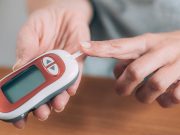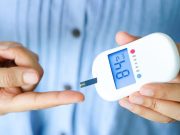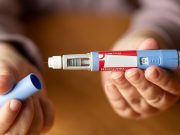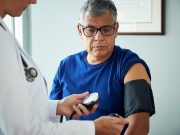Tag: Diabetes: Type II
GLP-1 Receptor Agonist Use in T2D Tied to Increased Risk for GERD, GERD Complications
Risk ratios were 1.27 and 1.55 for GERD and its complications during a median follow-up of three years for GLP-1 RA versus SGLT-2 inhibitor users
Muscle Ultrasound Can Detect Insulin Resistance
Increased muscle echo intensity effectively identifies insulin resistance and impaired insulin sensitivity
Disparities Seen in Continuous Glucose Monitor Rx by Language Preference
Among adult patients with type 2 diabetes, CGM prescriptions less likely for those with non-English language preference
ADA: Insulin Efsitora Noninferior to Glargine for Reducing HbA1c in Adults With Type 2...
Rate of combined clinically significant or severe hypoglycemia significantly lower with efsitora versus glargine
ADA: Orforglipron Reduces Glycated Hemoglobin in Early Type 2 Diabetes
All three doses of orforglipron superior to placebo with respect to primary end point of change in HbA1c from baseline to week 40
ADA: Weight Loss, Type 2 Diabetes Remission Up With Replacing Diet Drinks With Water
Greater weight loss and more diabetes remission seen among adult women with overweight, obesity and T2D
Semaglutide Offers Cardiovascular Edge Over Empagliflozin in Type 2 Diabetes
Incidence rates of composite of death, MI, stroke were lower, but not significantly so, for patients treated with semaglutide
DASH Diet for Diabetes With Low Sodium Reduces BP in Those With Diabetes
Most blood pressure benefits seen in the first three weeks of the diet
Finerenone + Empagliflozin Offers Greater Benefit in CKD, T2DM
Greater reduction in urinary albumin-to-creatinine ratio seen for combination versus either agent alone
Concurrent Hypertension + Type 2 Diabetes Predict High Mortality Risk
Higher all-cause and cardiovascular mortality predicted with concurrent hypertension and type 2 diabetes














